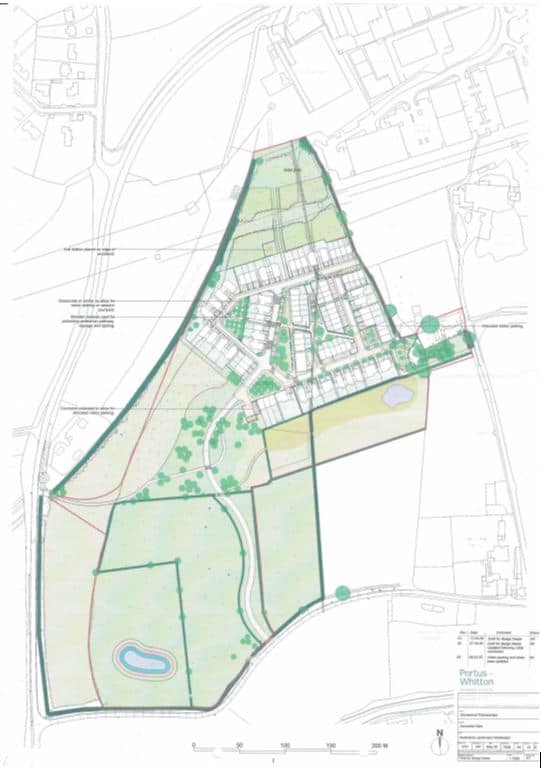Originally published on 28 August 2020
Nicholas Arbuthnott Architect, MSc Sustainable Urban Development, University of Oxford
Correspondence to [email protected]
VERDICT
The Covid-19 crisis is inducing a majority of office commuters to work from home. Residential neighbourhoods should be therefore be designed to encourage home working within a low carbon footprint. Passivhaus principles combined with solar power, electric cars, and access to open space can achieve affordable very low carbon communities. Land areas for very low carbon communities are high, so Passivhaus developments need to be located in low density, suburban areas, which is now more feasible, and potentially desireable, for many former urban commuters now working from home.
BACKGROUND
A recent poll indicates that 87% of British middle class adults now work from their homes as a result of the COVID-19 crisis, while in the US it is suggested that only 33% of office workers have returned to the office. If this becomes a permanent trend, then the carbon footprint of office and home spaces would be increasingly combined, so that a low-carbon home, and a thermally more efficient house, could lead to an effective reduction in domestic carbon footprints. During the Covid-19 period, my partner and I have completed the design of a landscape-led, 88 dwelling Passivhaus scheme called Severell’s Field, on the edge of Cirencester, in southern England. The following comments seek to explore how a socially, economically, and environmentally sustainable residential development can be created to satisfy both home and work needs.
CASE STUDY: SEVERELL’S FIELD
The key objective of the Passivhaus project is to design a development which encourages social interaction and engagement within the locality, combining an equal social mix of market and affordable housing. This is even more important after lockdown to ensure that those permanently working from home might be able to replace social interaction gained from the office with neighbourhood engagement and local networks. All houses are designed with access to their own gardens, which lead onto streets and extensive public open space. The neighbourhood development has been designed with ‘bumping spaces’ to facilitate positive social interactions, and integrated with a primary school as social interface, as well as an educational necessity. Extensive, open access woodlands provide the potential for forest gardens, community supported agriculture, ponds, walking and running circuits, allotments, sustainable urban drainage, and a space for a solar park on the adjoining 20 acres. The new woodland and gardens will enhance opportunities for biodiversity, sequester carbon, produce community picked food, and encourage a closer connection to nature, all aiding mental health.
The scheme should start on site next spring, and detailed design has started based on plan shape and orientation to Passivhaus standards, and ‘fabric first’ principles. The walls and roofing materials will lock up as much carbon as possible for years, by using a combination of natural wood fibre boards and cellulose fibre insulation to an air tight overall external wall thickness of 600mm to achieve very low U values. Combining this with triple glazed windows and mechanical ventilation heat recovery, should ensure that very little energy will be required for either heating or cooling the house. There will be no connection to the adjoining gas grid. Instead a small located in each garden will provide mainly hot water and occasion space heating .
By using UK-sourced, prefabricated building methods each house shell structure can be erected within 10 days, so minimising weather disruption and cash flow risk. We calculate that economies of scale will bring Passivhaus construction costs to around ten percent above standard building methods, making the development economically sustainable when taking into context capital and running costs.
In relation to other domestic and transport energy needs, the development will incorporate both photovoltaic solar panels on roofs, supported by the nearby small solar farm. Each house will have an ‘on plot’ space, and charge point for electric vehicles. With technology moving fast in this area, we need to ‘future proof’ the design for breakthroughs to come.
CONCLUSIONS
Because of the land area required to achieve low-carbon housing of this type, it is only possible in lower density locations. The thickness of the walls will reduce net useable floor areas, and the on-plot parking, generous gardens, and extensive roof and land areas required for photovoltaic energy use, makes this type of housing unsuitable in high density settlements. It is most viable in the city suburbs or town extensions, where land areas are usually more affordable and available. But the impact of COVID-19 on community patterns, substantially reducing, or even removing the carbon footprint of commuting for a significant proportion of the office workforce, as well as removing their need to live in close proximity to their work, gives former commuters a much wider choice of home location. This combined, with the potential arrival of both affordable locally sourced solar power and grid-sourced wind power to run transport for services and the home, could provide the opportunity to shift away from compact high density cities to a lower carbon suburb.
AUTHOR
Nicholas Arbuthnott is an architect, and a director of Severell’s Field Developers Ltd. He has a BA Hons in Architectural Studies, and an MSc in Sustainable Urban Development.

